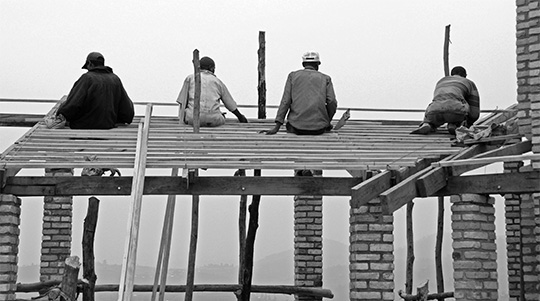Studio E/04
Expanding Ecologies
Francesco Stassi & Secil Taskoparan
Studio Description
What is the role of design professionals in promoting sustainable development in the Global South? This Studio explores low-cost, low-carbon design and construction strategies in the Global South with a focus on Rwanda, exploring how design choices in a project have implications at environmental, cultural, social, and economic levels. In a context like Rwanda, the scarcity of resources, materials, and products can allow architects, planners, and developers to design and build more efficiently and sustainably. By developing a Conservation Training Centre in the Akagera National Park in eastern Rwanda, the students will investigate how design choices and the selection of local materials impact the life cycle of buildings and the broader context. In addition, they will examine how to merge their design with its surroundings, respond to the local microclimate, recognize more-than-humans' needs, and become an active tool to enhance conservation and support the park rewilding process in the region.
Studio Outcomes
In this studio, students will investigate appropriate technologies and material supply chains, explore their projects’ economic feasibility and environmental sustainability, and develop enactive research, stakeholder engagement, and physical modeling skills. The analysis and understanding of the local context, responding to the power imbalances and the ethics of locality when practicing in the Global South, will guide the students in taking a critical position on how their design will impact the prime users and the broader social and environmental context. Simulating a professional environment in the studio, the students will tackle their projects following the design project stages from pre-design to construction documentation, demanding a high level of design resolution and graphic representation. Through studio workshops, mini-lectures, and discussions with external local stakeholders, the students will tackle how design and construction strategies can respond to challenges on the ground and enhance opportunities for the livelihoods of communities, wildlife, and the natural environment.
Studio Leaders
Francesco Stassi is a Lecturer and Creative Practitioner at the Faculty of Architecture, Building and Planning of the University of Melbourne and a registered architect in Italy and Rwanda, with extensive experience in socially engaged architecture in East Africa. He is the Director and Partner at ASA Studio - Active Social Architecture, an architecture firm based in Kigali, Rwanda. His research interests focus on appropriate technologies, cost-efficiency, participatory processes, and sustainable design for projects in the Global South.
Secil Taskoparan is an architect and a Ph.D. student in the Department of Architecture at Monash University. Her academic and professional career spans six countries, including Turkey, the US, Rwanda, and Finland, where she practiced and taught architecture. Her practice-based doctoral research examines the socio-spatial practices along the modified peri-urban river corridors in Indonesia and Malaysia. She is passionate about design that promotes nature, locality, collaboration, and design research methodology that brings practice, searching, and learning together.
Readings & References
Bocco Guarneri, A. (2020). Vegetarian architecture: Case studies on building and nature. Jovis.
Butera, F., Adhikari, R., & Aste, N. (2014). Sustainable building design for tropical climates: Principles and applications for eastern Africa. UN-Habitat.
Dyson, A. (2023). Building materials and the climate: Constructing a new future. United Nations Environment Programme.
Folkers, A., & Van Buiten, B. A. C. (2019). Modern architecture in Africa: Practical encounters with intricate African modernity. Springer International Publishing.
Lewis, P., Tsurumaki, M., & Lewis, D. J. (2022). Manual of biogenic house sections (First edition). ORO Editions.
Minke, G., & Minke, G. (2009). Building with earth: Design and technology of a sustainable architecture (2nd and rev. ed ed.). Birkhauser-Publishers for Architecture.
Page, A., & Memmott, P. (2021). Design: Building on country. Thames & Hudson.
Yeang, K. (1995). Designing with nature: The ecological basis for architectural design. McGraw-Hill.
Schedule:
Monday 3:15pm-6:15pm & Thursday 3:15pm-6:15pm in MSD 227
Off-Site Activities:
